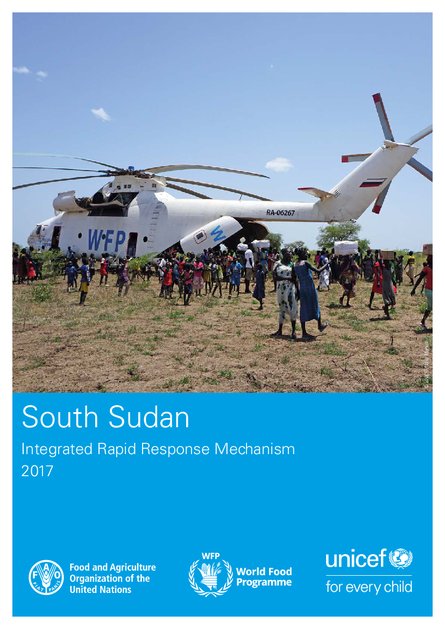
In March 2014, to reach internally displaced people and those most affected by the ongoing conflict with lifesaving humanitarian assistance, and to re-open humanitarian space, the World Food Programme (WFP) and the United Nations Children's Fund (UNICEF) initiated an Integrated Rapid Response Mechanism (IRRM). This was designed to address critical gaps in provision of lifesaving humanitarian coverage and to meet the needs of those who might otherwise be inaccessible by responding to the rapidly changing environment on the ground.
In Greater Upper Nile, continued clashes contributed to a high number of people, mainly women and children, being displaced in remote locations, while access to many areas became constrained. Insecurity also intensified in the Greater Equatoria region, which prior to the July 2016 crisis had remained relatively stable. At the beginning of 2017, 4.9 million people in South Sudan were estimated to be severely food insecure, according to the 2017 Integrated Food Security Phase Classification. This figure was projected to increase to 5.5 million in July, during the dry season. In southern Unity State, famine was declared in Leer and Mayendit counties, while Koch and Panyijar counties were considered likely to be affected.
To respond to growing needs in these highly insecure locations and in an attempt to mitigate the spread of famine, UNICEF and WFP scaled up the number of joint IRRM missions from three to five per month in 2017. Moreover, areas such as the Greater Equatoria and Western Bahr el Ghazal regions needed more support in terms of protection and nutrition for children and mothers, as these locations were seeing an increase in protection incidents even though they were relatively foodsecure. As a way of responding to the fluid environment in these new locations, agencies increased their engagement at field office level. In 2017 alone, 714,000 people – of which 128,000 were children under the age of 5 – were reached with comprehensive lifesaving assistance through 51 IRRM joint missions.
Paired with the expectation of continued conflict across the country and continued funding, WFP, FAO and UNICEF will continue to deploy IRRM missions to any part of the country where there are extraordinary humanitarian needs, even in the most isolated and hardest to reach areas. The need to ensure that protection of civilians continues to be streamlined into the IRRM to ensure conflict-sensitive programming, as well as enabling follow-up modalities post-mission, are amongst the priorities which will lead operationally in the coming year.